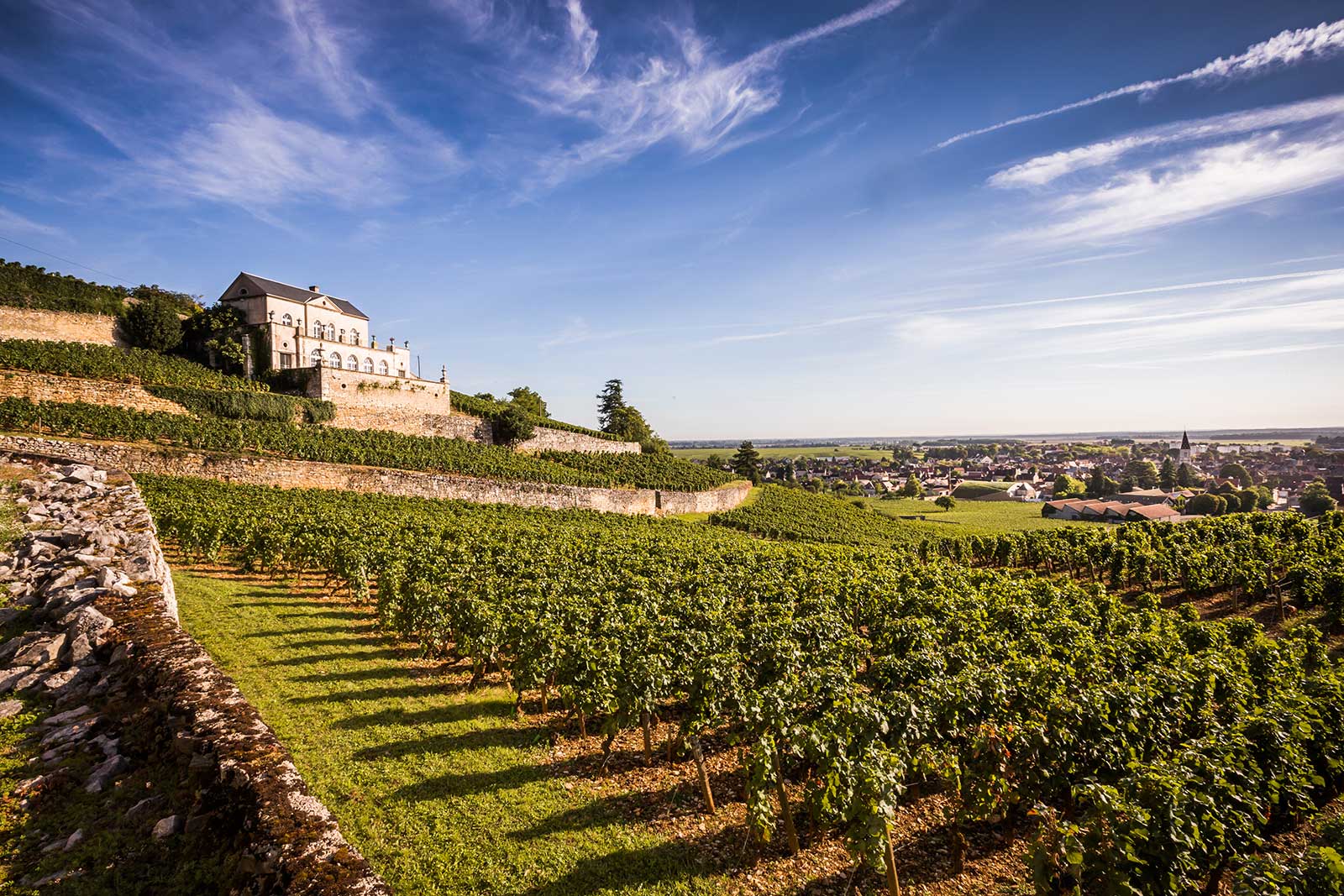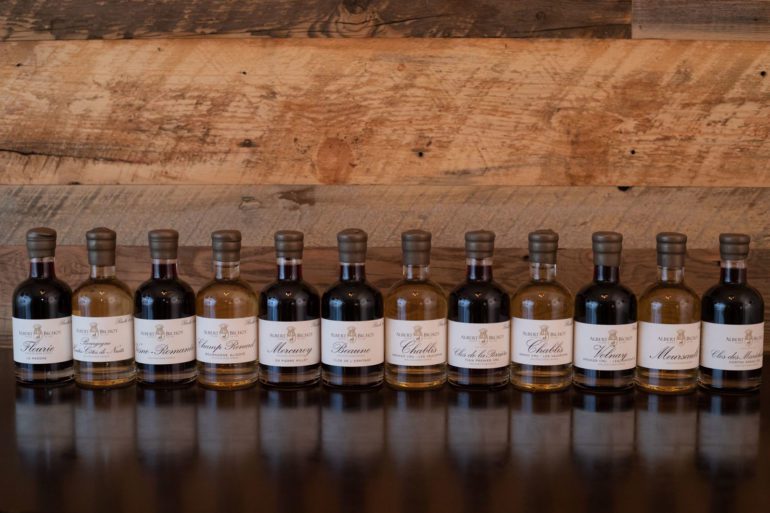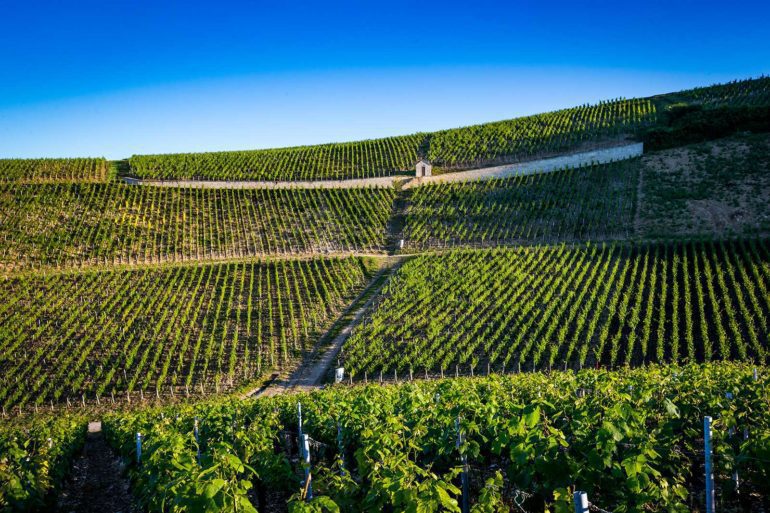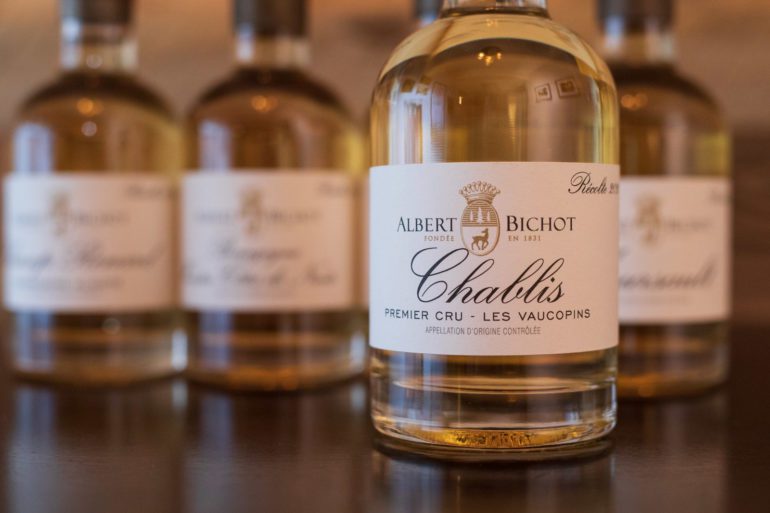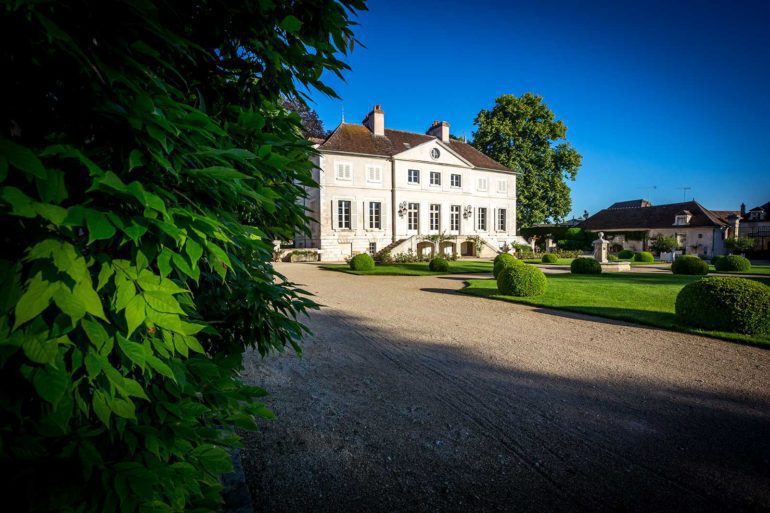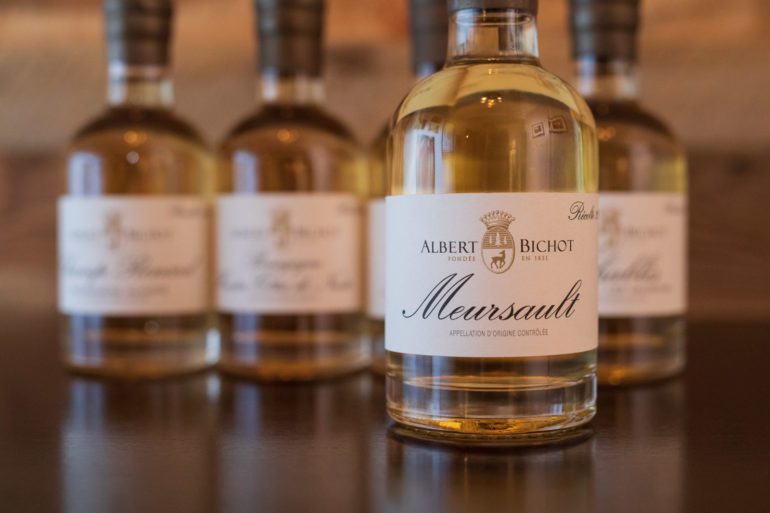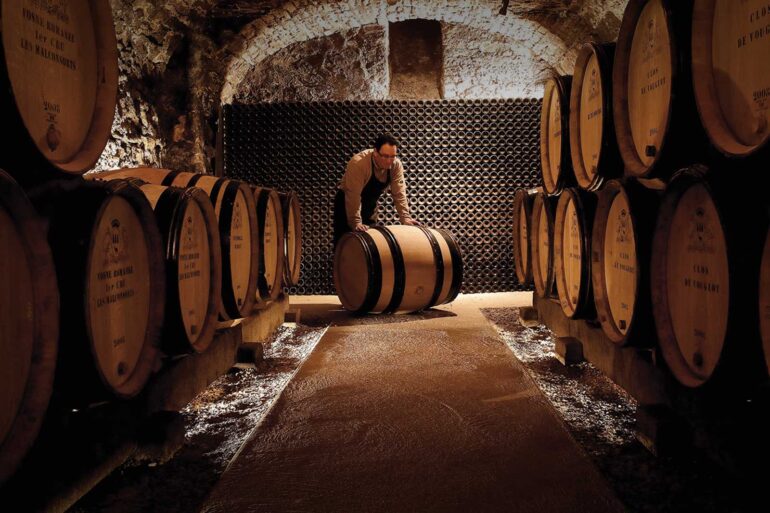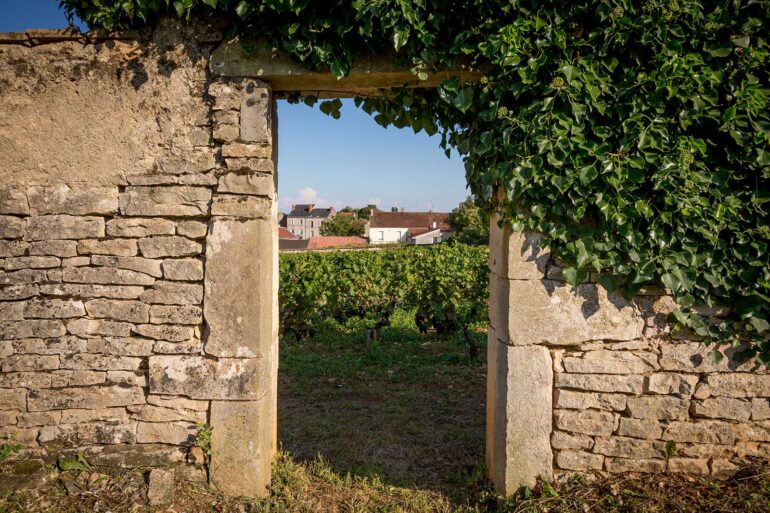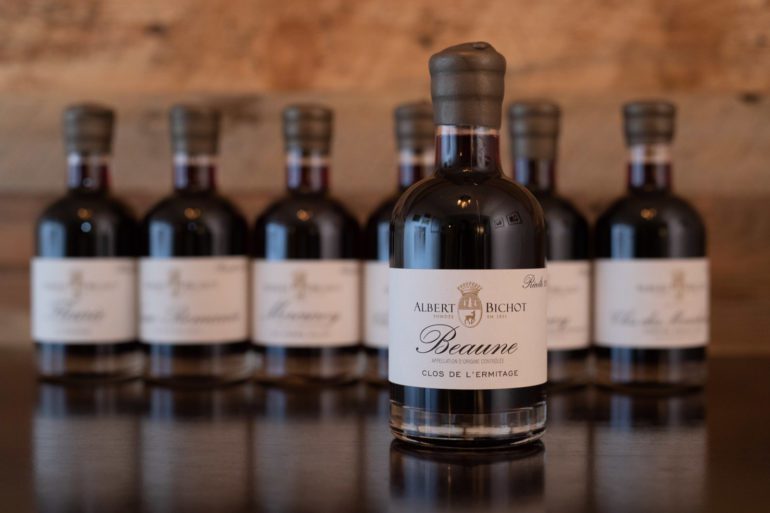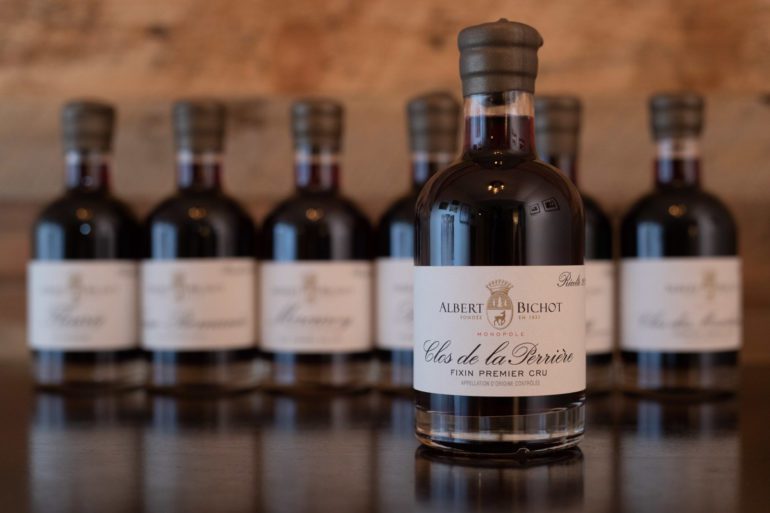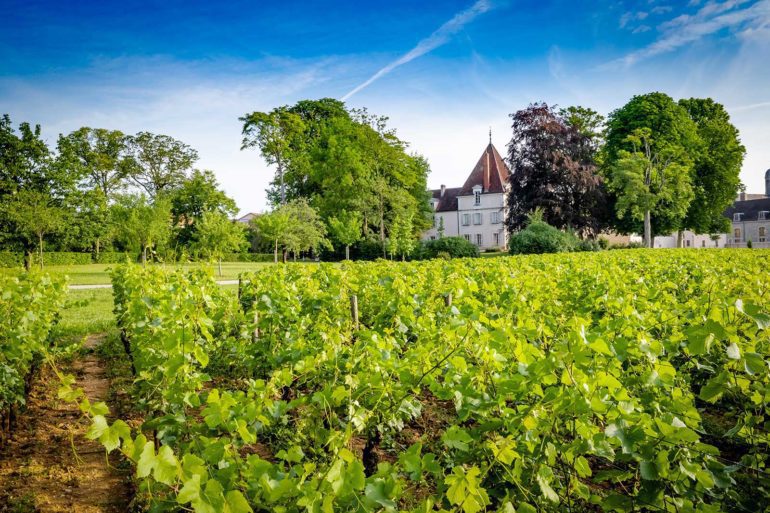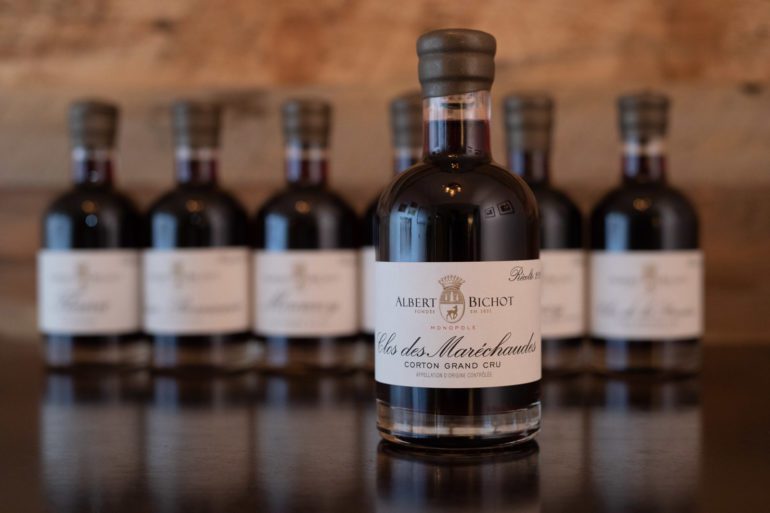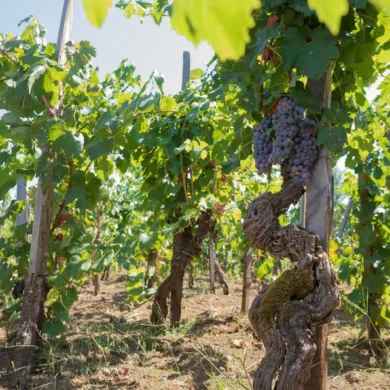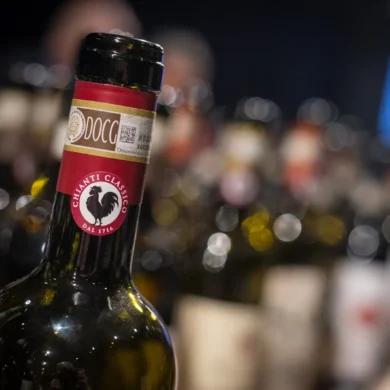When you think of Burgundy’s négociants, you probably think of Joseph Drouhin, Louis Jadot, Bouchard Père & Fils, or Chablis’ William Fèvre. Their footprint on American wine shelves means that they are often the first-taste most of us get of Burgundy, and while they can offer decent value, négociants can also be a mixed bag. And let’s be honest: much of Burgundy’s charm is its intimacy, and much of that is lost with these big brands who measure their total vineyard acreage in the hundreds.
Domaines Albert Bichot is a little different. Their production is still an ample 3 million bottles per year, but they are the first Burgundy négociant to become certified organic across the board. Their six domaines (two in Nuits-St-George, and one each in Mercurey, Pommard, Chablis and Moulin-à-Vent) decentralize the approach a bit, with a winemaker at each winery to maintain a certain level of intimacy with the terroir, which shows in the higher-end wines. And after recently tasting a dozen wines from the scorching hot and dry 2020 vintage, I can say the winemaking is quite thoughtful. Only two wines missed the mark for being overripe, while the showpiece wines — especially those from 1er Cru plots — do a wonderful job of transmitting their story.
After recently tasting a dozen wines from the scorching hot and dry 2020 vintage, I can say the winemaking is quite thoughtful.
Below is a roundup of those dozen wines with a callout for the four best value-for-money buys. Burgundy continues to have a major problem: the climate is exacerbating its scarcity, and demand continues to increase. The reports for the forthcoming 2021 vintage are grim: a calamitous spring frost reduced yields significantly, so these 2020 wines may end up being a Burgundy lover’s best friend for some time to come.
Yes, these wines are expensive, no way around it. And because of that, I do not fault any curious wine lover for preferring to learn about French wines from more affordable places. I would look the other way, too, if it weren’t for the fact that the demand is justified. When Burgundy is Burgundy, there is nothing else in the world like it. The Chardonnay melts into the senses and lingers with its radiance. The Pinot Noir reveals a personality you hardly ever get elsewhere.
I encountered these joys a few times with this tasting of Domaines Albert Bichot’s wines, and it underscored where I think négociants excel: at introducing newcomers to Burgundy’s splendors. Because of this, I’ve written the below write-ups with newcomers in mind, too.
A few quick notes:
- We normally do not include prices in our tasting reports just because (a) they fluctuate and (b) we have no commercial interest in selling these wines. But this flight seems to call for such an approach, just so you can see how the various tiers and villages effect prices, and so you can see why I am recommending the four standout bottles the way I did.
- This was a preview tasting arranged for media and the wine trade, so samples were bottled as 6-ounce pours with a different label than what you’ll find on the shelf. I refer you to Albert Bichot’s website for how the labels truly look.
- As always, the star-rated tier for assessment maxes out at five stars.
Cheers.
Blanc
2020 Bourgogne Hautes-Côtes de Nuits Blanc
The tasting started off with a simple Chardonnay that sells for around $47. That’s Burgundy and its pricing for you, but when measured against the glut of the world’s Chardonnay, the Bourgogne Hautes-Côtes de Nuits Blanc (★★★★ 1/4) still satisfies. Off the nose and through to the palate, there is a clear tropical tone and tenor here, registering with me like a whiff of fresh pineapple and a tinge of candied papaya. If that sounds sweet, it is just an illusion. The acidity has ample energy, and lends the wine a nice tautness.
2020 Chablis 1er Cru “Les Vaucopins”
Superb value.
The Chablis 1er Cru “Les Vaucopins” (★★★★ 3/4) comes from a band of south-facing vines located upstream from the town of Chablis. The overwhelming impression on the nose here is that of earthiness and soil. It is among the most mineral examples of Chablis that I have ever encountered, reminding me of the way Etna Bianco and other volcanic white wines lead with petrichor before their fruit. In Chablis, the famous Kimmeridgean marl soil is everything, so I probably just committed blasphemy by comparing this sacred limestone to something volcanic. Je m’excuse! However, where this wine swings you back to Chablis is in its sapidity and the way it seemingly wants to lift you out of your seat with its piercing focus. Vivid, delicate, evocative … this is why we bother with Burgundy and its prices, and at $74, I think this wine is absolutely worth it.
2020 Chablis Grand Cru Les Vaudésirs
Chablis’ Grand Cru are essentially seven strung-together parcels lined up one after the next on a single hillside that yawns to the south. Incredibly, Albert Bichot’s Chablis winery, Domaine Long-Depaquit, has one of these Grand Cru all to themselves, La Moutonne. Ok, technically its an eighth Grand Cru within the Vaudesir Grand Cru that is allowed its own designation. (Like you, I don’t understand why we need to have all these wrinkles). The takeaway is that Albert Bichot’s Chablis holdings are extensive and noteworthy, and the Chablis Grand Cru “Les Vaudésirs” (★★★★ 1/2) comes from the vineyards adjacent to La Moutonne monopole.
This wine struck me as supremely direct, likely because it needs a little more time in the bottle to truly show its stuff. That southern exposure in the vineyard seems to translate into very ripe apple tones with a light grapefruit zest feeling to the acidity. A delicate aroma I could only describe as rose gives this wine promise. This is a solid and well-made wine, but given its $144 price and the thrills of the Chablis 1er Cru “Les Vaucopins,” it gets edged out in my rankings. Perhaps time in bottle would tell a different story.
2020 “Champ Renard” Bourgogne Aligoté
Burgundy’s Aligoté is having its moment. Long confined to sparkling-wine production and the cocktail known as kir, Aligoté now finds itself riding high on its own merits. I personally love Aligoté wines for their exotic aromas and bursting palate presence. Unfortunately, Albert Bichot’s “Champ Renard” Bourgogne Aligoté (★★★★) was a bit of a miss. Decked out in wildly ripe fruit and strong vanilla-like tones, it came up short in two key areas: detail and acidity. There are many other versions that I would prefer, although this is the first 2020 Aligoté I’ve come across. The over-ripeness may just be a product of the year’s heat and dryness.
2020 Meursault Blanc
Meursault is a nine-letter name that immediately calls for a three-figure price, even at the village level. That’s just how it goes for this esteemed Côtes des Beaune village renowned for chiseled, exuberantly aromatic Chardonnay.
Albert Bichot’s version (★★★★ 1/2) boasts many of these traits, but veers away from the old-school profile that Meursault is rich and decadent. Nope: not here. Light fruits of purity and elegance hit the spot with their silky texture and precise acidity. I was reminded of golden apples, salty air and a touch of coconut, which served a powerful reminder or Meursault wines I’ve tasted in the past (terroir is real). Despite the intensity, this wine is accommodating on the palate, even if the $125 price tag may feel like a stretch for many of us. Then again, Meursault is so special, and this wine feels like Meursault.
Rouge
2020 “La Madone” Fleurie
Numerous Burgundy négociants play in Beaujolais as well, and Albert Bichot is no different in that regard. Their Domaine de Rochegrès in Moulin-à-Vent boasts 5.2 hectares of Gamay Noir, including a plot at the foot of Fleurie’s esteemed (and photogenic) Montagne de Fleurie where the Madonna chapel crowns the scene.
“La Madone” Fleurie (★★★★) was the other wine in the tasting that missed the mark, as Gamay Noir can lose its identity pretty quickly when the alcohol ticks up. Intense and very ripe, I would have confused it for a Russian River Pinot Noir. There is a bit of detail on the nose that’s pleasant — potting soil, plum, blackberry — but also a fair amount of “burn” from the alcohol. Like the Aligoté, this could be a symptom of 2020’s conditions.
2020 “En Pierre Milley” Mercurey Rouge
Superb value.
The Côte Chalonnaise — and in particular the village of Mercurey — offers Pinot lover’s the signatures of classic Burgundy (leanness, earthiness, and herbaceousness) while remaining “reasonable” in price.
The “En Pierre Milley” Mercurey Rouge (★★★★ 3/4) is the kind of wine that makes me want to find the nearest person who has never tried a Pinot Noir from Burgundy, hoist it toward their face and say “here, you must try this.” It has a firm herbal thread through the middle of the wine that recalls eucalyptus, and delicate red fruits to entice you further. The tannins were playful and light, and while it wasn’t the most structured wine of the day, it certainly was consumed quickest. Make of that what you will. Suggested retail is $69.
2020 “Clos de l’Ermitage” Beaune
Superb value.
Earlier we noted that Burgundy’s charm lies in its intimacy. That probably explains why the Beaune AOC is often overlooked: it is almost 1,000 acres in size, includes 42 Premier cru, and surrounds the city of the same name. It is far easier to talk about terroir when you can be specific, and Beaune simply doesn’t lend itself easily to that.
Albert Bichot’s lieu-dit in Beaune yields a wine of beautiful elegance (★★★★ 3/4). The aromas alone are like a whispery invitation, with delicate details recalling raspberry, graham cracker and tobacco leaf. On the finish, it showed a citrus-like flush of acidity to the sides of the palate, which encouraged another sip. At $67, it is perhaps the best value of the 12 wines tasted.
2020 Fixin 1er Cru “Clos de la Perrière” Monopole
Superb buy.
Fixin has long been in the metaphorical shadow of its neighbor to the south, Gevrey-Chambertin, but it continues to garner attention from value seekers. Often seen as the village’s top vineyard, the 1er Cru “Clos de la Perrière” benefits from higher elevation and the nearby forest, which helps to cool things down at night. In fact, a few Burgundy insiders have wondered why the vineyard isn’t rated as a Grand Cru.
Albert Bichot’s Fixin 1er Cru “Clos de la Perrière” (★★★★★) is outstanding, with a potent streak of mintiness and red tea tones running through its core. The raspberry and cherry-like fruits are so pure and inviting, with silky tannins and a drink-now-or-go-ahead-and-wait-I’ll-still-be-here kind of personality. The best trait? The 1000-watt brightness of the finish. Pricey, at $110, but given the quality and the pedigree of the vineyard (in relation to the rest of the region’s top vineyards) it feels worth it to me. This was the best wine of the day.
2020 Volnay 1er Cru “Les Santenots”
Interestingly enough, the 1er Cru “Les Santenots” actually resides in Meursault. Chardonnay grapes from the vineyard must carry the Meursault name, while the reds must carry Volnay.
This wine (★★★★ 1/2) is fabulously rich and complex, with the aromas suffusing the senses with cherries, raspberry, red tea, rosehips, menthol and tobacco. More rounded than the Fixin 1er Cru Clos de la Perrière, it also needs a bit of time to find its focus. This was the one Pinot Noir in the tasting where the fruit felt a smidge less fresh than the others. Suggested retail is $131.
2020 Vosne-Romaneé Rouge
No other village has a bigger reputation than Vosne-Romanée, the vaunted and hallowed ground of the Grand Crus of Romanée-Conti, La Tâche and Richebourg. Ordinary village wines can cost hundreds, depending on the producer, just because of their proximity to greatness. This wine, at $140, is more expensive than the 1er cru from Volnay, Fixin and Beaune.
If there is a consistent thread that I’ve detected among this village’s wines, it is a hint of smoke to go with all that purity of Pinot that Vosne-Romanée is legendary for. That shows up nicely here (★★★★ 1/2), as does a darker black cocoa tone. The palate is juicier and fruitier than your nose would have you believe, and the bright, citric acidity on the finish can be dazzling. What is missing at this stage is a bit more complexity and depth, but I’ll give it time for that. It feels like quite a bit of this wine’s story has yet to emerge.
2020 Corton Grand Cru “Clos des Maréchaudes” Monopole
Alas, this tasting ended on a Grand Cru wine, from the monopole of Clos des Maréchaudes within the Grand Cru Corton (★★★★ 1/2). I did not taste these wines blind, so my first impression of the wine — one of disappointment — was likely do to this fact. I saved enough for a tasting later in the day, which I did do blind, and that’s when it occurred to me that this wine was simply closed off and not ready for tasting. Grand Cru wines can take some time to integrate, and to a casual taster, that might be disappointing if you pull the cork too early. Nonetheless, what I did detect was a wine with a strong botanical tone through its heart, and rich, red fruit that appeared a bit dense and layered. The tannins are more satin than silk at this stage, and overall impression was one of gravitas and not integration. That may come in time, but for a wine costing $213, one might want to pause and give this several years in bottle before tasting.
Note: These wines were provided by Domaines Albert Bichot as part of a virtual wine seminar they hosted for sommeliers and wine media. Learn more about our editorial policy.
Photo credit: Bottle photos ©Kevin Day/Opening a Bottle. Vineyard and domain photos ©Domaines Albert Bichot.
